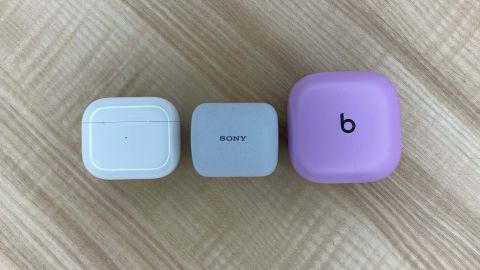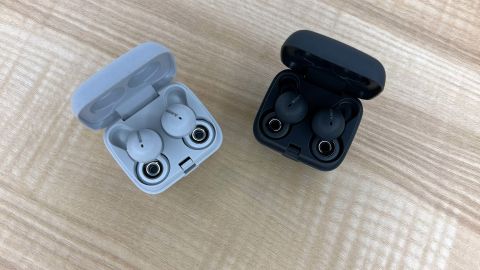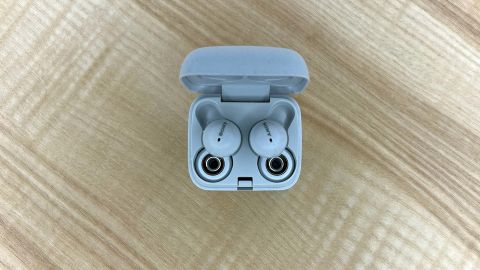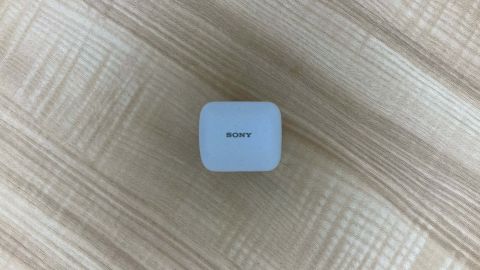
These anti-noise-canceling earbuds keep you aware of your surroundings

Sony’s LinkBuds are unlike any other pair of earbuds I’ve ever used — namely because of a donut-like ring that sits in your ear. This design allows outside sound to persistently flow in, which is ideal for a return to the office, studying in a library or hanging around the house.
There are lots of earbuds you can get with more features for the LinkBuds’ $179 price, but none of them are uniquely designed to always let outside sound in. I’ve spent well over a week with Sony LinkBuds, trading in my AirPods 3, Beats Fit Pro and AirPods Pro for their one-of-a-kind designs. So let’s unpack them and see if they’re worth a listen.
Anti-noise-canceling earbuds
Whether you’re a student back on campus, you’re a worker getting ready to return to the office or you’re at home with a bevy of family members, the LinkBuds could be more useful to you than earbuds with active noise cancellation (ANC). You’ll just need to weigh what features you value most.
The who, what and how
Who this is for: Sony’s LinkBuds are best for those who don’t care about ANC and would rather always hear their surroundings. They’re ideal for those working outdoors, avid runners and parents who are at home working with kids.
What you need to know: LinkBuds offer the best transparency mode we tested and deliver exceptional audio quality for their small size. They have a unique design that may not fit all ears, namely those with smaller ear canals. You’ll want to take your time to find the right rubber tip that fits best. And while these earbuds offer strong sound, they don’t provide a secure seal, and there is no active noise cancellation.
How these compare: LinkBuds offer a better transparency mode than other earbuds since they have a physical hole in the design to let in unfiltered environmental sounds and conversations. It’s a more natural ambient noise experience than the Galaxy Buds Live and works better than AirPods Pro with Transparency enabled. Sound quality is on par with Sony’s more expensive WH-1000XM4, but since they don’t seal off your ear, it’s not the most immersive experience. The battery life comes in at just around five and a half hours, which lags behind similarly priced earbuds.

The LinkBuds have a physical hole, and it’s not there by accident. Sony calls this an “open ring design,” but we’d rather call it a donut.
It took me a few days to get used to this design. My ears are a bit on the smaller side and I needed to play around with the rubber tip, which rests around the main hull. This clear piece of elastic keeps the LinkBuds from rocking around inside your ear or, at worst, from falling out. Sony includes five sizes in the box (extra small, small, medium, large and extra large), and I recommend trying them all out. After about two days, I found the right fit, and for the most part, the LinkBuds have stayed in. They even stayed put during indoor cycles on the Peloton and for a run. LinkBuds are also IPX4 rated, which means they can handle a drenching in sweat and even a light rain shower.
And like most true wireless earbuds, Sony’s LinkBuds live in a tiny combo charging and carrying case. It can easily fit into a relatively small pants pocket or even a breast pocket. You’ll need to charge it via USB-C, as Sony didn’t include wireless charging here. The buds and case are made from recycled plastic, which feels softer to the touch than typical plastic but is still quite durable. You can pick from white or black for LinkBuds as well.

Given the lack of touchable space on LinkBuds, Sony’s control situation is a little unique and strange at first. Thanks to built-in sensors, the buds’ Wide Area Tap feature lets you tap on your cheek or the area in front of the earbuds to control playback. It’s weird, but it’s also a good use of space.
You don’t need to be super forceful, but two quick taps on the side of my face paused or resumed playback. The earbuds play a tone to let you know they’ve recognized the command. You can also touch the top of the LinkBuds to control them.

It bears repeating, but the LinkBuds neither seal your ear entirely nor offer noise cancellation. That’s because these earbuds are built to keep you tuned in to the world around you.
After I got the fit squared off, I began using the LinkBuds at the start of my workday, taking them out during lunch and popping them back in for the rest of the day. They’re not as easy to forget about as Beats Fit Pro or AirPods Pro, but they also don’t weigh down the ear, especially since they sit flush for the most part.
While typing away at my desk, I could hear someone knock on my door, even with the volume at around 70%. It’s also pretty natural-sounding, considering that LinkBuds aren’t using microphones to let in environmental noises. At times I could hear my upstairs neighbor’s dog scampering across the floor, the HVAC kicking in and even the dishwasher cleaning up a bunch of mugs and plates. It gives you extra awareness in your space and is an absolute joy for using at home, even more so while working.
From a personal safety aspect, I could see this being especially helpful in circumstances where it pays to be more attentive, like walking at night, taking public transportation or navigating new places.
There isn’t a way to block out these noises, though, and if that’s a must, you won’t enjoy or like the LinkBuds. Even with the music at higher volume levels, you can still hear most environmental noises. You’ll also encounter more sound leakage at higher volumes — something to keep in mind if you’re in a shared space.
Sony does have an Adaptive Volume Mode (which can be turned on in the companion Headphones Connect app), which intelligently adjusts the level based on where you are. It uses the microphones to listen to noise levels around you and set the levels well in my testing.

The LinkBuds’ audio quality is robust, even for a pair of earbuds with a hole in the middle.
Powering the audio experience here is a custom 12mm driver with the Integrated Processor V1 that first premiered on the Sony WF-1000XM4. The audio is crisp and clear, with solid bass that doesn’t crackle.
With “The Waiting” by Tom Petty and the Heartbreakers, you get an accurate reproduction of the track that gives equal attention to the shaker, drums, guitars and Petty’s vocals harmonizing on top. In a similarly dense track like “Born to Run” by Bruce Springsteen, the LinkBuds don’t hesitate to let all aspects of the wall of sound shine through, making several guitars, the drums, the piano and the saxophone all known.
Even with “Good 4 U” by Olivia Rodrigo playing at close to full blast, the opening bass is rich, and the onslaught of vocals paired with the ramp-up of drums and guitar is as strong as ever.
Solid battery life and microphones

One area we wish Sony delivered more on is battery life. The LinkBuds are tiny and deliver only about five hours of battery life on a listen. I could stretch it closer to five hours and 45 minutes, but that was with lower listening volumes. It’s behind similarly priced earbuds, like the AirPods 3, which come in at six hours and 10 minutes. Sony’s WF-1000XM4 beat these out by even more at 12 hours and 30 minutes. The charging case provides about 12 hours of additional listening and 17 hours in total — shorter than both AirPods 3 at 30 hours and the WF-1000XM4 at 24 hours.
Microphone quality is pretty solid, performing best when you’re indoors. The LinkBuds feature embedded microphones and a custom algorithm that works to identify your voice, minimize distortion and provide a clear result. And since you can hear your own voice while speaking, calls are a little more natural than on other earbuds.
The $179 Sony LinkBuds stand as the first earbuds that don’t fully disconnect you from the world around you. They’re unique and deliver some very exceptional use cases. Whether you’re a student back on campus, a worker getting ready to return to the office or at home with a bevy of family members, the LinkBuds could be more useful to you than earbuds with ANC.
You’ll ultimately need to weigh what you value most for this premium price point. Those who want noise cancellation are better off with the $199 Beats Fit Pro or $199 Galaxy Buds Pro, both of which are just $20 more than the LinkBuds. But if you want robust sound and an ability to hear the world around you, the LinkBuds deserve a look. Just be patient with finding the right fit.
Source: https://www.cnn.com/2022/02/15/cnn-underscored/sony-linkbuds-wf-l900-review/index.html?iid=CNNUnderscoredHPcontainer
















